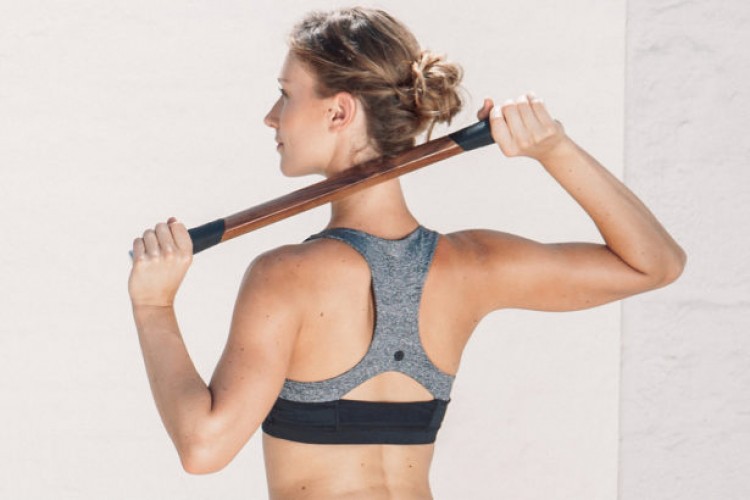FASCIAL THERAPIES
THE DIVERSITY OF FASCIAL THERAPIES
Science relating to fascia has provided us with a hole new understanding of our body. A network of fascia is spanning all throughout our body. Today we know that it not only helps to keep our bones and muscles in place. It controls movements, is crucial to communication within our body and it is an integral part to our perceptions.
This holistic model can explain the actual effects and the success of forms of therapy such as acupuncture, rolfing or osteopathy which for a long time were rumored to have only placebo effects. Far eastern models as the one of the medians and western academic medicine are reunited in this approach, combining their strongest features.
We, here at BLACKROLL®, want to take part in this new movement. We are aiming at creating the best products possible to help you develop your ideal self-myofascial treatment in your own form of sports and in relation to your body. Therefore we like to share our knowledge and insight into the importance of fascia and are hoping to keep on learning by doing so.
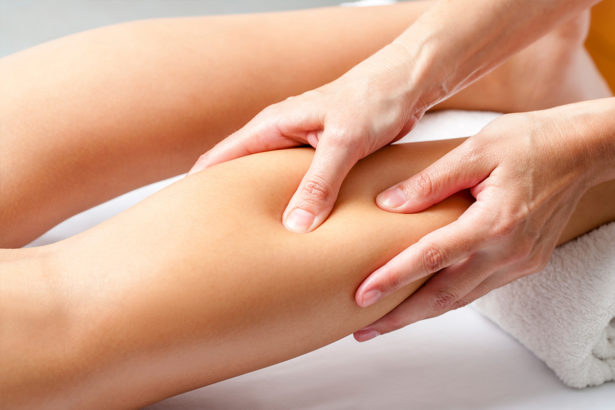
Osteopathy was developed in the 19th century by the American scholar Andre Taylor Still. He created a holistic, predominantly gentle form of treatment. The therapist searches for malpositions of bones, tensions within muscles and connective tissue as well as organic and neuronal abnormalities, only by help of his hands. Once the problem is located it will be resolved by manual treatments only.
The balance within the entire organism is restored so that the endogenous energy can flow freely. Osteopathy creates a sort of reset within the body helping it to restore homeostasis and its function of self-regulation
Osteopathy contains three main sectors:
CRANIOSACRAL OSTEOPATHY
This form of therapy focuses on the
- connection between skull (cranium)
- vertebral canal
- sacral bone (sacrum)
This area comprises the central nervous system: the brain and the spinal cord. It is enclosed by membranes forming a hydraulic system that is subject to minimal, rhythmical pumping movements.
This craniosacral rhythm is called primary respiration due to its immense importance. Statistics have shown that ca. 85% of our body's dysfunctions are related to disturbances in the craniosacral system. That may help in understanding why a craniosacral therapy is most helpful with problems not only relating to our locomotor system but also to a huge variety of other illnesses or pains.
PARIETAL OSTEOPATHY
This form of therapy focuses on bones, vertebrae and tissues such as muscles and fascia.
It includes techniques to dissolve trigger points, to treat pains related to tensions and isometric muscular exercises.
VISCERAL OSTEOPATHY
This form of therapy focuses on
- organs, their agility
- function and position
- as well as the connections in between fascia trains and other structures.
It is important to mention that this schematic separation into three forms of osteopathy is made only to give you an easier understanding of the field. All three systems must be connected and used together to ensure a well functioning therapy of the holistic, interactive and complex system that is our body.
Osteopathy has shown itself to be helpful in treating new, acute as well as longstanding, chronic problems.
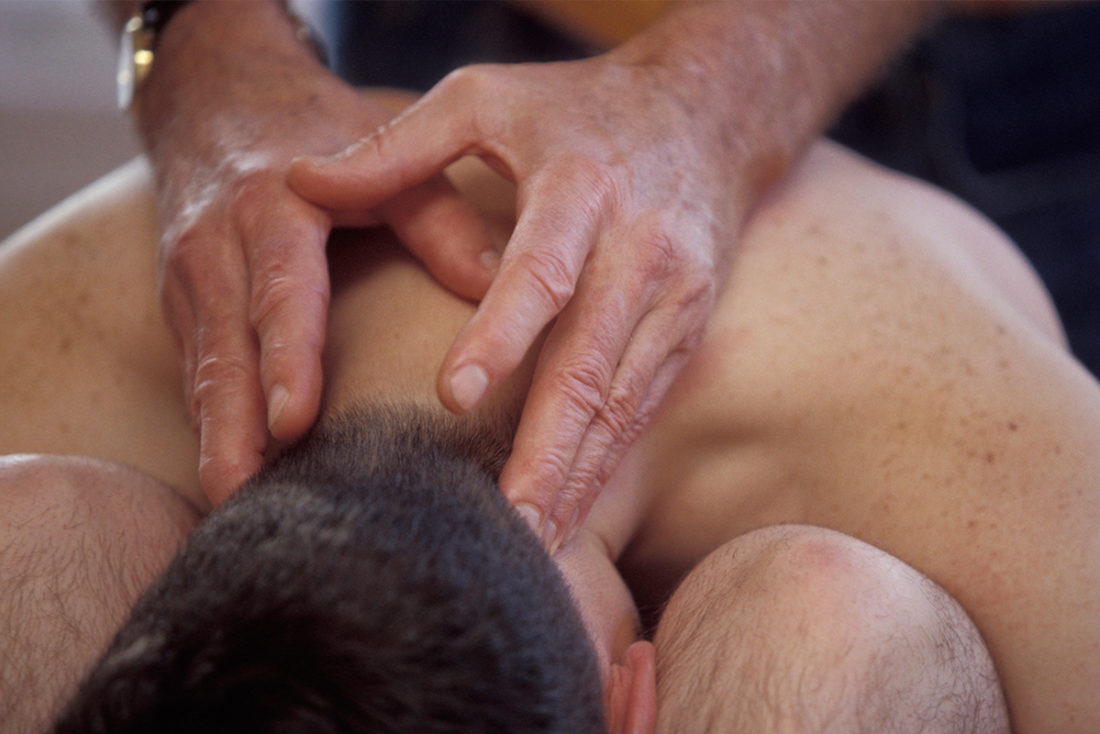
“Fascia is the organ of posture...” Ida Rolf (1896 – 1979)
THE CONCEPT OF ROLFING®
Rolfing® is a treatment that aims at restoring our body's statics by treating muscles and fascia alike. This is called “structural integration”.
Treatment starts by analyzing your posture whilst standing and whilst walking.
On the basis of this analyzes the therapist begins with deep treatments of your connective tissue. In rolfing the plastic properties of fascia are used. With slow movements and pressure applied with hands and elbows the therapist can help your fascia relax. This will slowly lead to a more natural and upright posture. The patient can support the treatments by conducting certain instructed movements e.g. self-myofascial treatment with BLACKROLL®.
The treatment sessions usually end with exercises directed at posture- and body-perception corresponding with the topic of each session.
The goal is to create a more relaxed posture, more fluent movements and an improved body-perception.
In usually 10 sessions the entire body is treated following a bottom-up concept.
AN EARLY ADJUSTMENT OF A FALSE POSTURE
The first 3 sessions aim at opening up the outer, widespread layers of fascia. Starting with the 4th session deeper core structures are treated. The last 3 sessions focus on integrating the newly changed structures and motion sequences.
1. Session: Respiration.
2. Session: Feet.
3. Session: Median.
4. Session: Angels, legs, pelvic base.
5. Session: Pelvic 1.
6. Session: Pelvic 2.
7. Session: Head and shoulders.
8.-10. Session: Integration.
Rolfing® is primarily interested in preventive procedures rather than eliminating pathological conditions. By doing so rolfing® provides you with the opportunity to revise a false posture early on.
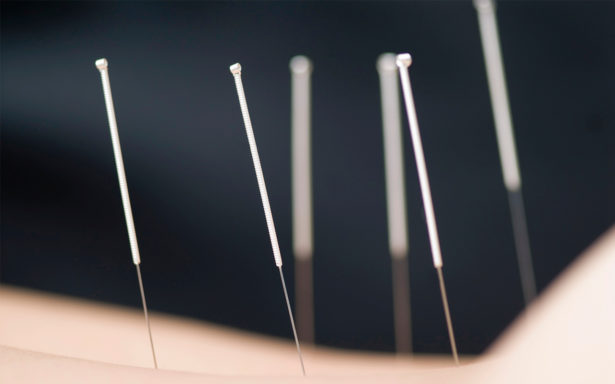
Acupuncture is a 2000-year-old, traditional Chinese form of medical treatment. In the center of this approach stands the idea of a free flowing vital energy: The Qi.
Thin needles (aku = needle) are used to puncture (punktio = puncture) the skin and superficial fascia layers. In doing so certain points on energy trains throughout the body – the meridians – can be stimulated. The needles remain in their spots for ca. 30 minutes. This shall help to harmonize the energy flow between different meridians and help balance bodily functions connected to certain meridians. Different influences can be achieved by turning the needles, moving them up and down or preheating the needles.
Today we know that important points on meridians correspond with crucial intersections in our fascial network. So correlations in the modes of impact between fascial training and acupuncture are more than probable. Another possible source of relief could be the increased release of analgesic hormones triggered by the needles. Especially with head, back and joint pains can be treated with acupuncture as shown in several case studies.
Over time several specific forms of acupuncture have been developed:
− Ear acupuncture.
− Head (or skull) acupuncture.
− Hand acupuncture.
− Feet acupuncture.
Whilst these technique only use needles on the respective body parts they are still searching for effects in the whole human organism.
INTEGRAL CONNECTIONS OF FASCIA
As all fascial therapies fascial manipulation® by Stecco starts with the biomechanic model of our bodies. This model depicts all muscles and fascia as an integral, three dimensional network within the body.
Deducting from this model musculoskeletal pains do not have to originate from the spot in which the pain is experienced. Often the pain is caused by a change of tension somewhere else in the body.
The goal of fascial manipulation® by Stecco is to connect the experienced pain with the point triggering the pain and to find the most effective treatment of that pain.
The deep lying muscle fascia that surrounds muscles from bone to bone plays a crucial part in this form of treatment. This is because of the fact that this fascia is densely packed with nerve receptors. It therefore is of high importance to our perceptions and the coordination of our motions sequences.
MASSAGE TECHNIQUES FOR MYO-FASCIAL RELAXATION
The fascial manipulation® by Stecco separates 14 myo-fascial segments within the body. These segments consist of 6 connected myo-fascial entities comprised of following components:
- Deep lying fascia
- Muscles
- Joints
- Hypogastric vessels
Changes in these segments can lead to pain, often connected to certain movements. These changes are counteracted by deep stroking massage techniques pinpointing myo-fascial tensions and releasing them.
So more often than not, the therapist will treat different regions than the ones the pain is actually experienced in.
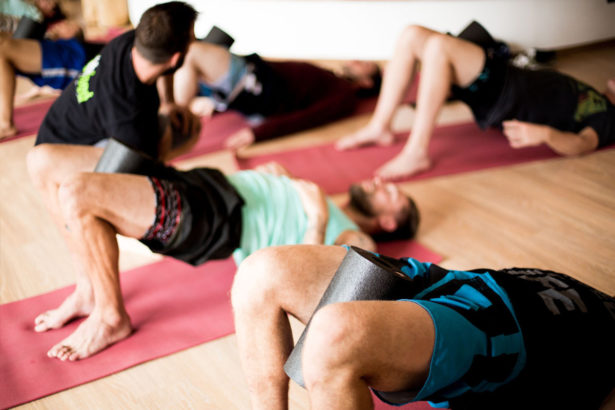
Reconnecting body, mind and soul – his mantra is the essence of the Indian philosophy of Yoga. To practicing Yogis this philosophy is an independent approach to life. But different forms of Yoga can also be used as treatments of myofascial problems. They can help in achieving:
- More flexibility and strength
- More calm and relaxation
- More attentiveness and concentration
Substantial elements to Yoga are body exercises (Asana), respiration techniques (Pranayama) and meditation. The emphasis can change by varying approaches. By connecting physical with psychological aspects Yoga can be used to attend certain illnesses such as back pain or insomnia. These effects were proven in several studies.
In the course of the several fitness and wellness trends many different modern forms of Yoga have been developed. Starting with Power-Yoga to Flying-Yoga (performed on hanging cloths), Bikram-Yoga (performed in rooms with great heat) and the popular Yin-Yoga everything seems possible. Yin-Yoga is also known as fascia Yoga. Stretching positions are hold for a long period of time stimulating the fascial tissue. In doing so the collagenous parts in the fascia are stimulated to induce a renewing and rebuilding process.
Especially when beginning a new form of Yoga, be advised to work with a qualified, well trained Yoga instructor. Getting your body used to the different exercises and positions can be a long and time consuming process.
Pilates is named after its inventor: Joseph Pilates. Today it is found in the programs of almost every gym or sports club. Most people know it as a training compiled of different floor exercises accompanied with only a few tools. These special tools were also invented by Pilates to be used in his concept of an ideal training. These tools can be found in rehabilitation exercises primarily.
At the heart of a basic training stands the center of the body, the so called “powerhouse”. It consists of the deep lying muscles – “the four Musketeers”:
- Pelvic base
- Corset muscle (transverse abdominal muscle TVA)
- Diaphragm
- Multifidus muscle
All functional movements shall be rooted in this powerhouse.
By implicating the big muscle and fascia trains into the exercises the whole body is involved and
- strength
- flexibility
- stability and posture
are trained.
By concentrating on an inner center, fluent motions in conducting the exercises and a focus on diaphragmatic respiration the mind is addressed as well. Stress is reduced and everyday worries are pushed aside.
Pilates is a versatile system of movements that can help to counteract a false posture or one-sided strains caused by certain sports. Additionally it is a good exercise to form your body and posture.

Cupping is one of the oldest methods of therapy. The tools applied were used in old Egypt and are still in use today. It can also be found in traditional Chinese medicine where it is known as Ba Guan.
During this alternative healing procedures bell shaped cups are placed on the skin creating negative pressure. This vacuum can be created by heating the cups oder (more commonly) by the use of a rubber suction ball.
The negative pressure sucks the skin and connective tissue up into the cup
- stimulating blood flow
- lymph flow
- and metabolism
of the skin and superficial fascia. With these impulses of artificial bruising the body's energy flow is stimulated and a process of self healing initiated.
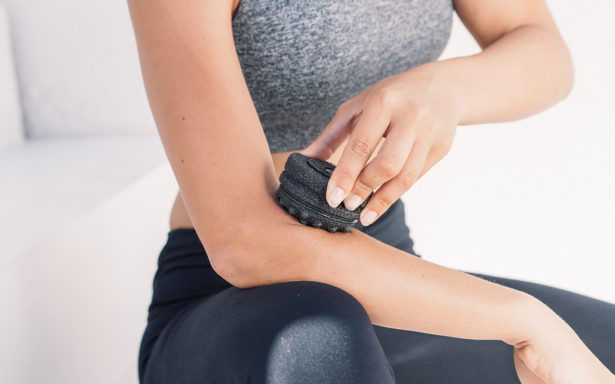
The abbreviation “SMT” stands for a wide range of different techniques with which a patient can conduct a certain myofascial therapy him- or herself.
Usually trigger points or fascial trains are treated with the use of rolls or balls (e.g. the products of BLACKROLL®). Via the application of well dosed pressure (e.g. by shifting the body weight on a BLACKROLL®) adherences and tensions within the fascia can be pinpointed and released.
The benefits of self-treatment are obvious. You can work on the exact pain spots, you can control the level of the experienced pain and the tools are always available.
Of course there are limits as well. Especially deep lying adherences can be treated by manual techniques applied by a trained therapist only.
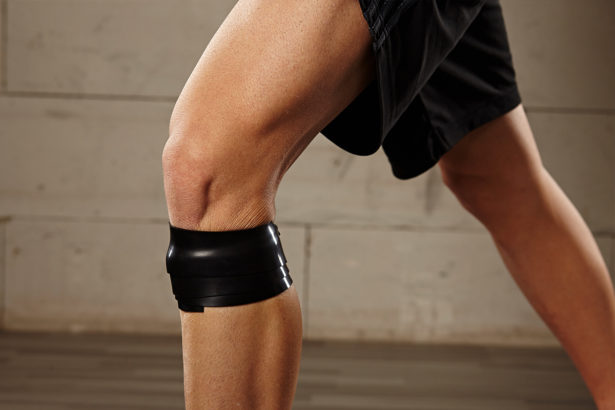
Medical flossing is a rather new treatment method. It originated in the so called Vodoo-Flossing as part of a fitness trend. It now is used as an addition to physical therapy as it can help in easing pains and increasing joint flexibility.
Typical for medical flossing are the elastic latex bands. These bands are used to bandage muscles or joints which are then passively or actively mobilized. The technique used to apply the floss bands and the pressure used can vary according to the problems treated with them. The effects of medical flossing can be felt after the first session with the unwinding of the band.
Different modes of operation create different effects:
- The shear forces created by the motion of the joints, the tissue and the taut band help to release myofascial adherences and tensions (kinetic resolve).
- The bandage presses fluids out of the tissue and the hypogastric vessels. Thereby lymph flow is stimulated and blood flow increased (sponge effect).
- The phenomenon of nociceptive inhibition reduces the pain by stemming the forwarding of pain stimuli via the spinal chord (subdermal irritation).
Hematoma and blisters are possible side effects caused through the enormous pressure created by the floss band. Therefore medical flossing should only be done under the supervision of a well trained therapist.
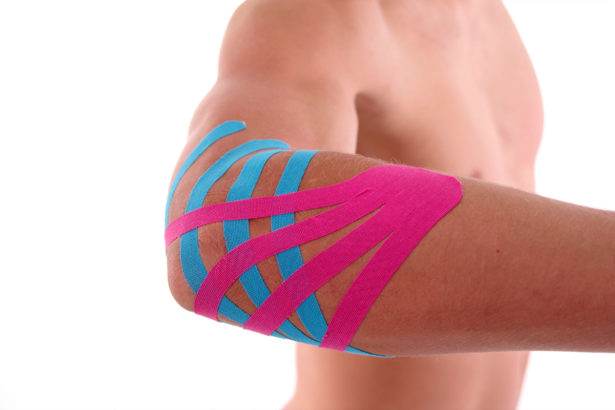
Therapeutic taping was first developed in Japan. Today it is most commonly known as kinesiological taping or shorter as the kinesio-tape method (gr. Kinesis = Motion).
In difference to bandages applied to stabilize joints or muscles kinesio-tapes are more elastic. They are affixed extensively and shall ensure the mobility of joints and muscles. It is assumed that the tapes create a continuous massage effect sustaining or even increasing the healing process in the taped area. They help in stimulating
- the metabolism
- blood flow
- lymph flow
- and nerves.
Medical taping is used to support the effects of common physio therapy, orthopedics, neurology and ergo therapy. It is used to attend painful ailments of the muscle-fascia tissue as well as the tendons and skeletal apparatus. Typically it is applied to help with sports injuries or as a precaution by extremely high strains.
In addition to its effects during treatment it helps to increase body awareness, as the tape can be felt with every motion.
The properties and elongation of the tape are similar to that of the human skin. With an elongation of usually around 130-140% of the initial length the full range of motion is ensured. The tape is self-adhesive, breathable and water-proof. So the tape can remain on the skin for ca. one week.
When choosing a taping technique certain aspects should be considered:
- The pain profile
- The surface tension of the skin and the fascial system
- The quality and quantity of motion
- Possible vegetative symptoms
Different myths of different effects in using certain colors of tape are in fact myths. There is no scientific basis to proof these ideas. But they are a colorful eyecatcher nonetheless.
There are no products to list in this category.

